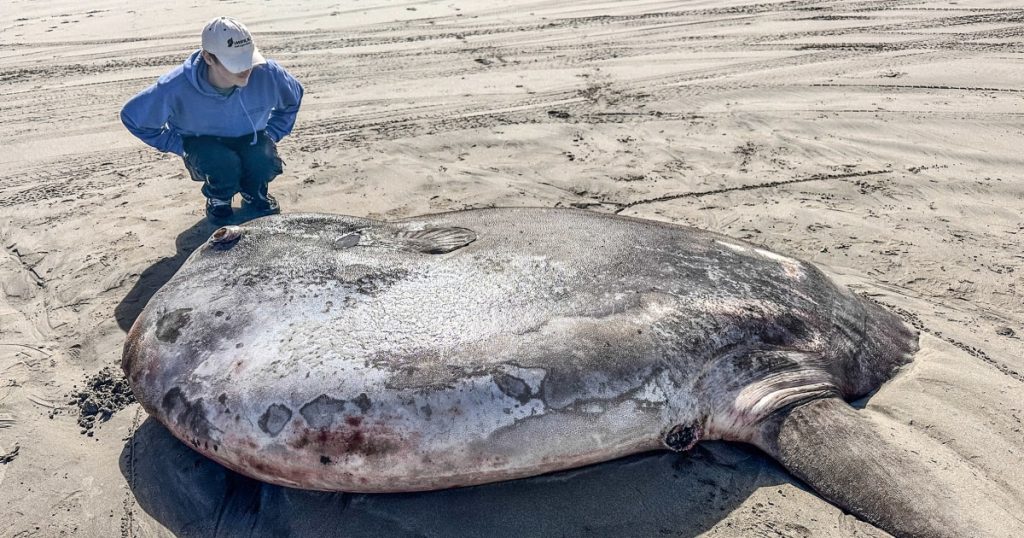The hoodwinker sunfish, which gets its name from its ability to evade detection, is a rare species that was recently discovered off the coast of Oregon. The name “mola” comes from Latin, meaning “milestone,” referring to the fish’s flat, circular body. Scientists have observed these sunfish floating along the ocean’s surface, which they describe as “sunbathing,” but this behavior actually serves the purpose of catching jellyfish and other gelatinous prey. Sunfish dive deep into colder waters to hunt, using the sun to warm themselves as their bodies cannot regulate temperature efficiently. Birds also play a role in cleaning sunfish by eating parasites off their skin while they rest on the surface.
Hoodwinker sunfish have distinct features that set them apart from ocean sunfish. Ocean sunfish develop wrinkles on their skin as they grow, while hoodwinker sunfish always remain completely smooth. Additionally, where a normal fish would have a tail, sunfish have a flap. Ocean sunfish have a wavy flap with bony formations, while hoodwinker sunfish have a two-part flap that can move independently. The reason for this difference is still unknown, with theories suggesting that the two-part flap may be needed for steering or agility. Sunfish, in general, remain mysterious to scientists, with five species identified, including the hoodwinker, but their relationships and co-existence in the same location are still unclear.
After the discovery of the hoodwinker sunfish off the coast of Oregon, people have flocked to Gearhart Beach to see the rare creature. Marine biologist Tierny Thys from the California Academy of Sciences commented that strandings like this serve as a reminder of how humans occupy only a small fraction of the vast ocean planet. She emphasized the humbling and inspiring experience of encountering such incredible creatures, underscoring the fact that there is still much to learn about the mysteries of the ocean and its inhabitants. The presence of the hoodwinker sunfish in different locations, such as Australia, New Zealand, and the Pacific Northwest, raises questions about possible migration patterns and connections between populations.
Despite the excitement surrounding the discovery of the hoodwinker sunfish in Oregon, researchers acknowledge that there is still much to learn about these elusive creatures. The unique characteristics and behaviors of sunfish, including their sunbathing activities, diving habits, and mysterious nature, continue to intrigue scientists. The presence of five sunfish species adds to the complexity of understanding their biology and ecology, including potential interactions and coexistence in various ocean habitats. The discovery of the hoodwinker sunfish serves as a reminder of the vastness and diversity of marine life, prompting further exploration and research to unravel the mysteries of these fascinating creatures.
The study of sunfish, including the hoodwinker species, highlights the importance of ongoing research and conservation efforts to protect these unique marine animals. By studying their behaviors, interactions, and habitats, scientists can gain valuable insights into the ecological roles and conservation needs of sunfish populations. Public interest and excitement surrounding the discovery of the hoodwinker sunfish in Oregon underscore the significance of raising awareness about marine biodiversity and the importance of preserving ocean ecosystems. Continued scientific exploration and collaboration are essential for understanding and safeguarding the diverse marine life that inhabits our planet’s vast oceans. Ultimately, the discovery of the hoodwinker sunfish serves as a testament to the wonders of the natural world and the need to continue exploring and protecting our oceans for future generations.


